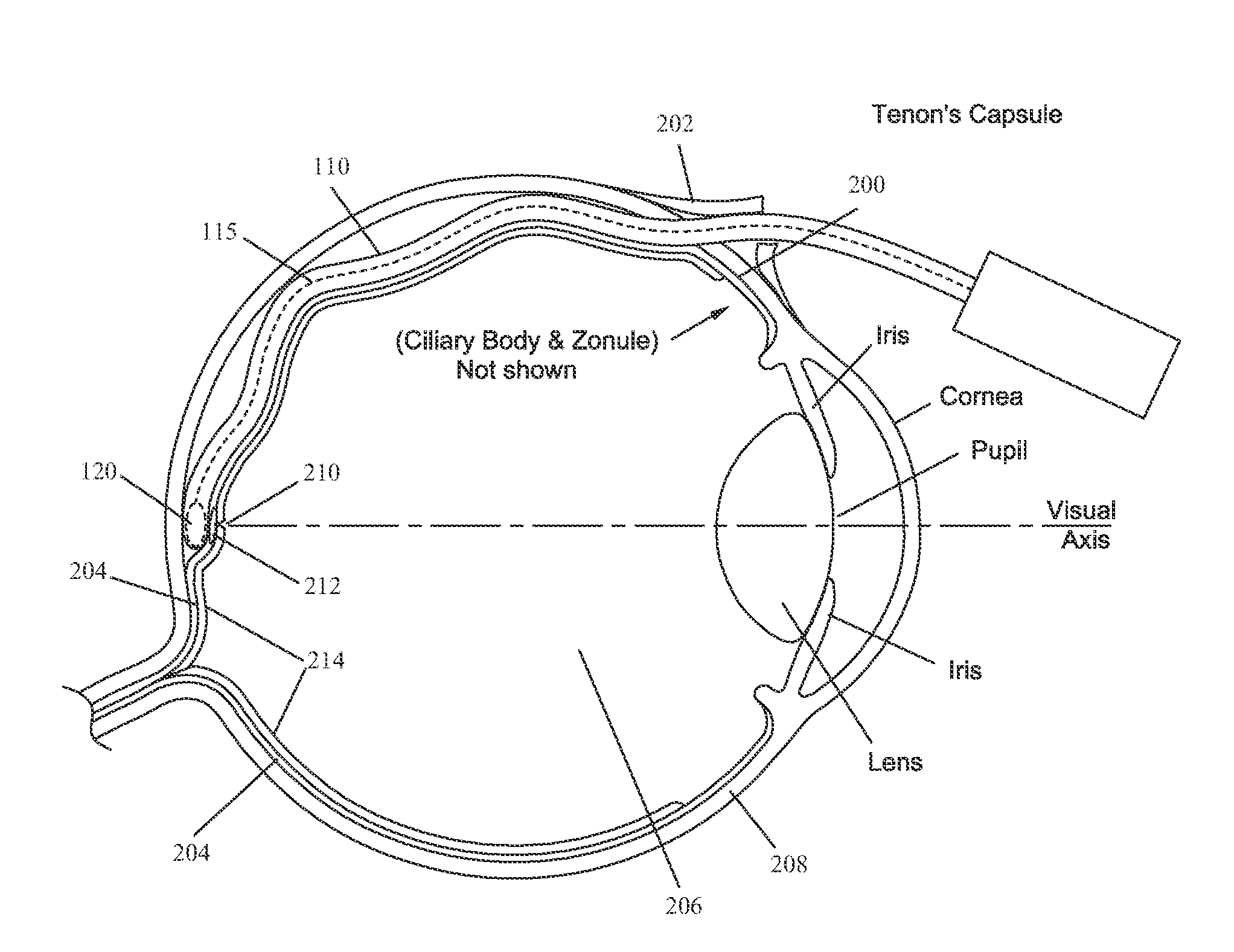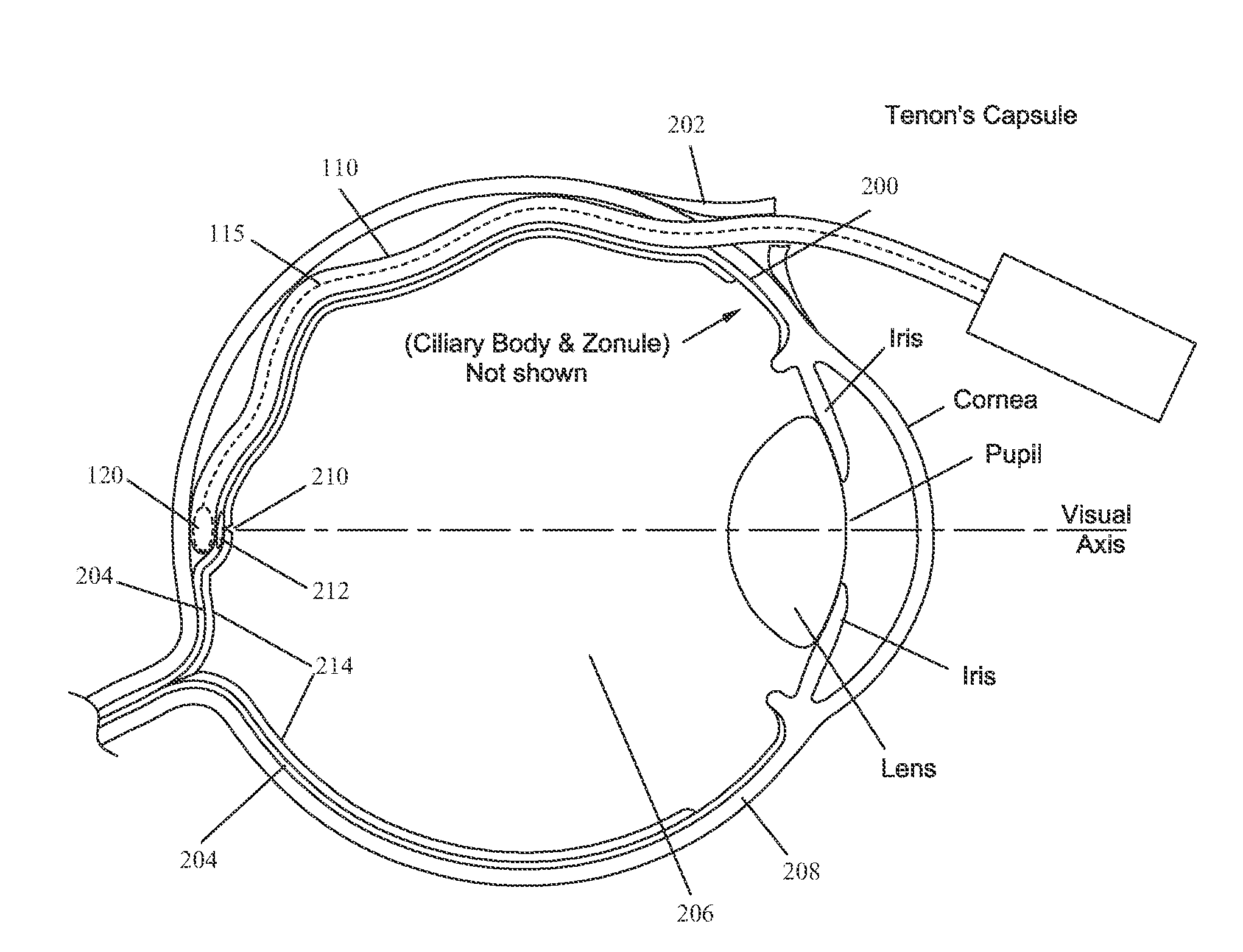Methods and devices for delivery of radiation to the posterior portion of the eye
a radiation delivery and posterior portion technology, applied in the field of methods and devices for introducing radiation to the posterior portion of the eye, can solve the problems of progressive damage to the retina, blindness or death through direct disruption of tissues, and difficulty in recognizing faces and other detailed tasks
- Summary
- Abstract
- Description
- Claims
- Application Information
AI Technical Summary
Benefits of technology
Problems solved by technology
Method used
Image
Examples
example 1
Example of a Surgical Procedure
[0033]The following example describes a surgical procedure utilizing methods of the present invention. The present invention is not limited to this example.
Preparation
[0034]The eye being operated is dilated, e.g., by instillation of tropicamide and epinephrine. The patient is brought to the operating room where cardiac monitoring and an intravenous line are established. A retrobulbar injection of a mixture of xilocaine and marcaine is given. Standard ophthalmic prepping and draping is performed, and a lid speculum is placed.
Incisions
[0035]A conjunctival incision is performed at the superotemporal quadrant about 3-4 mm posterior to the limbus, followed by an incision in the underlying Tenon's capsule to expose bare sclera. A bipolar cautery is used to cauterize episcleral vessels and render a vascular a patch of scleral bed. An initial, partial thickness scleral incision is performed followed by a series of shallower incisions to deepen the initial one....
PUM
 Login to View More
Login to View More Abstract
Description
Claims
Application Information
 Login to View More
Login to View More - R&D
- Intellectual Property
- Life Sciences
- Materials
- Tech Scout
- Unparalleled Data Quality
- Higher Quality Content
- 60% Fewer Hallucinations
Browse by: Latest US Patents, China's latest patents, Technical Efficacy Thesaurus, Application Domain, Technology Topic, Popular Technical Reports.
© 2025 PatSnap. All rights reserved.Legal|Privacy policy|Modern Slavery Act Transparency Statement|Sitemap|About US| Contact US: help@patsnap.com


